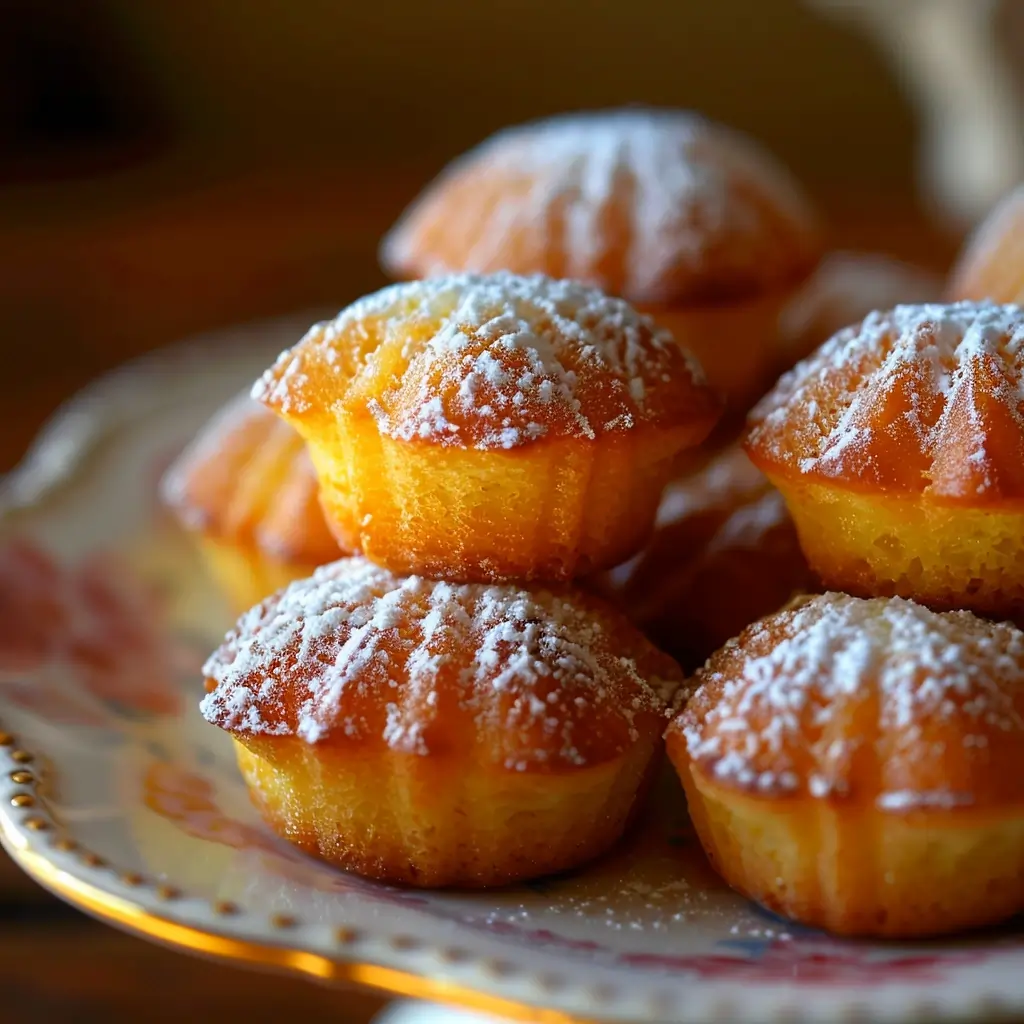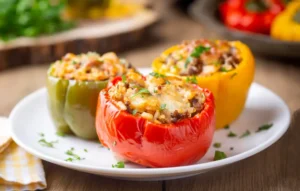Introduction
Madeleine cookies, with their light and airy texture, are a delightful French treat that can transform a simple cake into something extraordinary. If you’re looking for ways to incorporate madeleine cookies into cake recipes, you’re in for a sweet treat. These cookies, with their subtle flavor and delicate crumb, work wonders in cakes, adding a unique twist to traditional recipes. This article will guide you through the process of using madeleine cookies in cakes, from selecting the right cookies to preparing and decorating your cakes.

Why Use Madeleine Cookies in Cakes?
Madeleine cookies offer more than just a delicate flavor to your cakes. When you incorporate madeleine cookies into cake, you’re adding layers of texture and moisture that enhance the overall structure. Their light, spongy texture can complement denser cake batters, while their subtle vanilla or citrus flavor can brighten up chocolate or fruit-based cakes. Furthermore, madeleines’ unique shape and size make them ideal for creating visually appealing layers in cakes.
- Adds moisture: Madeleine cookies help retain moisture in the cake.
- Provides flavor: The subtle taste of madeleines can enhance your cake’s flavor profile.
- Improves texture: These cookies bring an airy, light texture to denser cake recipes.
Selecting the Right Madeleine Cookies
Not all madeleine cookies are created equal, and choosing the right one is essential for your cake’s success. When learning how to incorporate madeleine cookies into cake, consider the flavor, texture, and quality of the cookies you use. Ideally, you want madeleines that are fresh and flavorful, as stale cookies will not provide the desired effect in your cake batter.
- Freshness: Always use fresh madeleine cookies for the best texture and flavor.
- Flavor: Opt for madeleines with a hint of vanilla, lemon, or almond for complementary flavor.
- Size and texture: Larger madeleines can be crumbled into the batter, while smaller ones can be used for decoration or layering.
For tips on choosing the best cookies, explore How to Incorporate Madeleine Cookies into Cake.

Preparing Madeleine Cookies for Baking
To properly incorporate madeleine cookies into cake, you’ll need to prepare them first. This can involve crumbling or soaking the cookies, depending on the effect you want to achieve. If you prefer a smoother texture, you might opt for crumbling the cookies into small pieces. On the other hand, soaking the cookies in a flavored liquid can enhance the flavor of your cake while softening the texture.
- Crumbling: Break madeleines into small pieces to add texture to the cake batter.
- Soaking: Soak cookies in milk, coffee, or a syrup for added flavor.
- Puree: For a smoother texture, blend the cookies into a paste and fold them into the batter.
Learn more preparation techniques at How to Incorporate Madeleine Cookies into Cake.
Recipes Featuring Madeleine Cookies in Cakes
Now that you understand how to incorporate madeleine cookies into cake, it’s time to explore a few creative recipes. Madeleine cookies can be used in both light and rich cakes, making them versatile for various types of cakes.
- Madeleine Cake Layers: Layer crumbled madeleine cookies between light sponge cakes for added flavor and moisture.
- Madeleine Cake Crumbs: Use madeleine cookie crumbs to make the base of a cheesecake or other cake crust.
- Madeleine-Infused Buttercream: Blend ground madeleines into buttercream for a flavorful cake frosting.
These recipes demonstrate the many ways you can incorporate madeleine cookies into cake, whether as a base, filling, or flavoring.
For detailed layering ideas, visit How to Incorporate Madeleine Cookies into Cake.
How to Balance Flavors and Textures
One of the keys to successfully incorporating madeleine cookies into cake is balancing flavors and textures. Madeleine cookies tend to be subtly sweet, so it’s important to pair them with complementary ingredients that enhance their flavor without overwhelming it. If your cake is already rich or heavy, madeleine cookies can add a light, airy texture. Conversely, in lighter cakes, the madeleine cookies will provide structure and depth.
- Pair with fresh fruits: Fresh berries or citrus zest can complement the light, delicate flavor of madeleine cookies.
- Use complementary spices: Light spices like vanilla, cinnamon, or lemon zest can enhance the flavor of madeleine cookies in cakes.
- Balance moisture: Be mindful of the moisture content in your cake. Too much liquid could cause sogginess, while too little might make it dry.
Tools and Ingredients You’ll Need
Before you begin incorporating madeleine cookies into your cake, make sure you have the necessary tools and ingredients on hand. In addition to your madeleine cookies, you’ll need standard baking tools and some other key ingredients.
- Baking pans: Depending on your cake design, choose appropriately sized pans.
- Mixing bowls: You’ll need a variety of mixing bowls to prepare different cake components.
- Whisk or mixer: A hand whisk or stand mixer will help combine the ingredients smoothly.
- Flour, sugar, butter: These basic cake ingredients will serve as the base for most recipes.
The combination of the right tools and ingredients ensures that the madeleine cookies are properly incorporated into the cake without any mishaps.
Common Mistakes and How to Avoid Them
When baking with madeleine cookies, there are a few common mistakes to watch out for. These missteps can affect both the flavor and texture of your cake, so it’s important to follow best practices.
- Over-soaking madeleines: Soaking the cookies too long can make them mushy and affect the cake’s consistency.
- Not crumbling enough: If the madeleines are not crumbled well enough, they may not blend into the batter evenly, creating uneven texture.
- Ignoring flavor balance: Don’t overpower the subtle flavor of the madeleine cookies with too many strong ingredients.
By following the right techniques, you can avoid these common pitfalls and achieve a smooth, flavorful cake.
Decorating Cakes with Madeleine Cookies
Madeleine cookies can also be a great addition to cake decoration. Their unique shape and texture make them ideal for creating beautiful cake designs. Whether you’re placing them in layers or using them as topping, they can add both flavor and visual appeal to your cake.
- Layered decoration: Place madeleine cookies along the sides or top of the cake for a sophisticated look.
- Cookie garnishes: Decorate the cake with whole madeleine cookies, either glazed or plain, to create an elegant finish.
- Crumbled decoration: Sprinkle crumbled madeleine cookies over the top of your cake for added texture and flavor.
Storing and Serving Cakes with Madeleines
To ensure your cakes with madeleine cookies stay fresh, it’s important to store them properly. The delicate nature of madeleine cookies means they need a bit of care when it comes to storage.
- Store in an airtight container: Keep the cake in an airtight container to maintain freshness.
- Refrigeration: If the cake contains moist fillings, refrigerate it to prevent it from spoiling.
- Serving: Allow the cake to come to room temperature before serving for the best flavor and texture.
Proper storage will help maintain the integrity of the cake and keep it tasting fresh longer.

Customizing Your Recipes
If you want to get creative with your cake, there are plenty of ways to customize the use of madeleine cookies. From changing the flavor to adding extra ingredients, you can personalize your recipes to suit your preferences.
- Flavored madeleines: Try using different flavored madeleines, such as chocolate, orange, or almond, to alter the cake’s taste.
- Add-ins: Add nuts, dried fruits, or spices to the cake to complement the madeleine cookies.
- Layer with other ingredients: Layer your madeleine cake with fruit preserves, whipped cream, or ganache for added richness.
Nutritional Considerations
While madeleine cookies can add a delicious flavor to cakes, it’s important to consider their nutritional content. If you’re trying to keep the cake healthier, you might want to look for lower-calorie madeleine recipes or adjust your other ingredients accordingly.
- Calories: Madeleine cookies can be high in sugar and fat, so be mindful of portion sizes.
- Sugar alternatives: Consider using sugar substitutes if you want to lower the sweetness.
- Gluten-free options: If necessary, use gluten-free madeleine recipes to accommodate dietary restrictions.
FAQ’s:
How do you attach cookies to a cake?
Attaching cookies to a cake can be achieved using edible adhesives or frostings that act as a “glue.” Here are some methods:
- Buttercream frosting: Spread a thin layer of buttercream on the surface of the cake, then gently press the cookies into the frosting. The frosting will harden slightly as it sets, securing the cookies.
- Ganache: Use melted chocolate or ganache to adhere cookies to the cake. Apply a small amount to the back of the cookie, then stick it onto the cake.
- Royal icing: This icing dries hard and is perfect for attaching cookies for intricate designs.
- Candy melts: Melt candy wafers and use them to attach cookies for a quick and sturdy hold.
Always ensure the cake is slightly chilled to prevent the cookies from slipping off before the adhesive sets.
How to keep madeleines from drying out?
Keeping madeleines fresh and moist requires proper storage:
- Use an airtight container: Place madeleines in a tightly sealed container to prevent exposure to air, which causes drying.
- Wrap individually: Wrap each madeleine in plastic wrap to retain its moisture.
- Refrigeration: Store in the refrigerator if not consumed within 2–3 days, but let them return to room temperature before serving for the best texture.
- Avoid direct heat: Keep madeleines away from sunlight or heat sources, which can cause them to dry out.
- Freezing for longevity: For longer storage, freeze madeleines in a freezer-safe bag. Thaw them at room temperature before serving.
How do you serve madeleines?
Madeleines are versatile and can be served in many ways:
- Plain with coffee or tea: Their subtle sweetness pairs well with hot beverages.
- Dust with powdered sugar: A light sprinkle of powdered sugar enhances their presentation and taste.
- With dips or sauces: Serve alongside chocolate ganache, caramel, or fruit compotes for added flavor.
- As a dessert garnish: Use madeleines to garnish ice cream or pudding for an elegant touch.
- Layered in desserts: Incorporate them into trifles or parfaits for a unique texture.
How are madeleines different from cakes?
Although madeleines share some similarities with cakes, they differ in several key ways:
- Shape: Madeleines are traditionally baked in shell-shaped molds, giving them a distinct look.
- Texture: They have a light, spongy texture, unlike the denser crumb of many cakes.
- Size: Madeleines are small, single-serving treats, whereas cakes are typically larger and meant to be sliced.
- Flavor: Madeleines are subtly flavored with vanilla or citrus, while cakes can have a wider range of flavors and fillings.
- Preparation: Madeleines are prepared with a batter similar to sponge cake but often include melted butter for richness.
How to stick biscuits to a cake?
Biscuits can be attached to cakes in much the same way as cookies. Here’s how:
- Buttercream layer: Apply a layer of buttercream frosting to the cake, then gently press the biscuits into the frosting.
- Chocolate or ganache: Coat the back of the biscuit with a thin layer of melted chocolate or ganache and adhere it to the cake.
- Edible glue: Use royal icing or an edible glue mixture to attach biscuits securely.
- Support with toothpicks: For heavier biscuits, use toothpicks inserted through the biscuit into the cake to hold them in place temporarily until the adhesive sets.
How do you keep cookies from sticking to the baking tray?
Preventing cookies from sticking to the baking tray requires proper preparation:
- Use parchment paper: Line the baking tray with parchment paper to create a non-stick surface.
- Silicone baking mats: These reusable mats provide an excellent non-stick layer for cookies.
- Grease the tray: Apply a thin layer of butter, oil, or non-stick spray before placing the cookie dough.
- Chill the dough: Chilling the dough reduces spreading and sticking during baking.
- Proper removal: Allow cookies to cool slightly on the tray before using a spatula to remove them gently.
Conclusion
Incorporating madeleine cookies into your cake is a simple yet effective way to enhance both the flavor and texture of your baked goods. Whether you’re using them to add moisture, flavor, or a unique aesthetic, madeleines offer endless possibilities for cake lovers. By carefully selecting the right cookies, preparing them appropriately, and avoiding common mistakes, you can create a cake that delights the taste buds and impresses visually. So, the next time you’re planning to bake a cake, consider adding madeleine cookies for a truly extraordinary dessert experience.




6 thoughts on “How to Incorporate Madeleine Cookies into Cake: A Step-by-Step Guide”